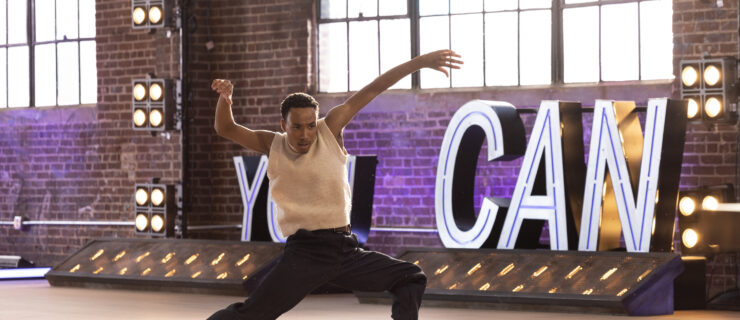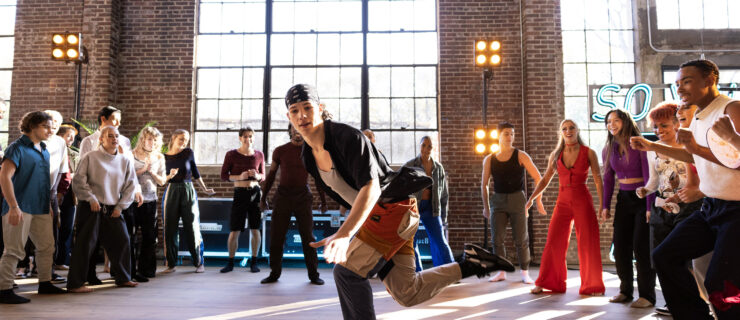The Importance of Epaulement
It describes the elegant sweep of Irina Dvorovenko’s neck, it can mean the subtle difference between automaton and artist—and without it, you’re incomplete.
What is it? Épaulement.
In French, épaulement (ay-pohl-MAHN) literally means “shouldering.” In ballet, it refers to the position of the shoulders, head and neck. It’s used mostly in positions including croisé, ouvert and effacé in center exercises, though some schools, such as Vaganova, incorporate it extensively into barrework. For example, in tendu devant with the working arm held to the side, a Vaganova dancer looks “over” by slightly lifting her head up and to the right over her arm. In tendu derrière, she looks “under” by slightly inclining her head down and to the right, as if looking under her arm.
The term can also refer to more than just a dancer’s positioning. When a ballerina is praised for her “good épaule-ment,” it means she has combined lovely port de bras, upper-body work and artistic expression seamlessly.
“Good épaulement shows that you have style and carriage,” says Kee-Juan Han, director of The Washington School of Ballet. “I joke with students that constantly dancing without use of épaulement is just aerobics. But we’re not at the gym. We’re dancers.”
Whether in class or performance, épaulement takes coordination, grace and strong placement. Here are some ways to build this finishing touch into your technique.
What Is It?
To best understand épaulement, stand in fifth position croisé, right foot front, arms en bas. Point your head in the same direction as your hips and belly button (the corner of the room). In this position, you are standing without épaulement.
Now turn your head slightly to the right in the direction of the right foot, gazing over your right shoulder (eyes, too—no sidelong peeking in the mirror!). Lift from your sternum, as if showcasing a beautiful diamond necklace hanging regally around your neck (be careful not to pop your ribs out, though!). Do you feel and look different? Now you are standing with épaulement.
The Technique
To use épaulement correctly, you must first have proper alignment. Every port de bras should come from the upper back, rather than lifting from the shoulders, which will cause tension in the body. “Port de bras comes from the middle of the back and the lower abdominals so you can lift up—not from the shoulders,” says Abbie Siegel, principal of Pacific Northwest Ballet School. “It looks tense when you try to use the shoulders. You want to create lines that are fluid, yet with a shape.”
Because of the slight upper-body twist from the waist that sometimes occurs in épaulement—especially in croisé—be careful not to let your hips tilt or to pull you off center. This tendency is one reason why some schools choose not to teach épaulement to beginner students, who don’t yet possess adequate core strength, placement and comfort with directionality.
But when dancers develop sufficient strength, the use of épaulement makes a big difference in performance quality. “For an advanced dancer, when you add épaulement it gives a different dimension. It adds texture and makes them ready to express themselves onstage,” says Siegel.
As you move through positions, remember to coordinate the head, arms, legs and shoulders. For example, in développé écarté from fifth, your arms should open at the same time as your leg extends à la seconde, and your head turns toward the working leg: One should not arrive before the other.
Mirror, Mirror
The mirror is one of the biggest épaulement enemies. Han likes to remind dancers of the cautionary story of Snow White. “I ask them what the downfall of the queen is,” he says. “It isn’t the apple or the poison—it’s that she spent too much time staring in the mirror on the wall!”
The danger of dancing in the mirror is twofold. The first concern is that when you get onstage, you’ll be a two-dimensional dancer who gazes straight at the audience, rather than using your upper body according to the choreography. This makes your dancing flat and boring.
The second danger is that you won’t be able to feel your placement kinesthetically, as Han points out. This can happen when you rely on the mirror to validate correct alignment, rather than physically remembering what correct alignment feels like. Think of the mirror as a tool, not a crutch, to periodically check your lines.
If you just can’t tear your eyes away from your reflection, ask your teacher if every now and then the class can execute center combinations facing away from the mirror.
Icing on the Cake
Remember that a beautiful épaulement should not come at the expense of your technique, nor is it a substitute for using other parts of your body artistically. Articulation of the foot, for instance, can be a tool for expression just as much as your port de bras.
“Épaulement is like layering on top—it’s icing on the cake,” says Siegel. “If you don’t have good cake, the icing is going to fall off.”



